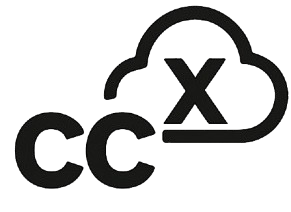AWS Architecture Best Practices: Cost Optimization and Sustainability
The AWS Well-Architected Framework guides users in building effective cloud solutions. This post delves into two vital pillars: Cost Optimization and Sustainability, focusing on achieving business value efficiently while minimizing environmental impact.
Cost Optimization Pillar
The Cost Optimization pillar focuses on running systems to deliver business value at the lowest possible price point. It involves understanding and controlling where money is spent, selecting the most appropriate and right-sized resource types, analyzing spending over time, and scaling to meet business needs without overspending.
Key Design Principles & Best Practices:
- Practice Cloud Financial Management (CFM): Implement processes for managing and optimizing cloud costs, often through a dedicated Cloud Financial Management or FinOps team or function.
- Adopt a Consumption Model: Pay only for the computing resources you consume and increase or decrease usage based on business requirements, not fixed forecasts. Turn off non-production resources when not in use.
- Measure Overall Efficiency: Monitor cost and usage, attributing costs to specific teams or products to drive accountability and identify areas for improvement.
- Stop Spending Money on Undifferentiated Heavy Lifting: Leverage AWS managed services to reduce the operational burden and cost associated with tasks like data center operations, patching, and backups.
- Analyze and Attribute Expenditure: Use tools like AWS Cost Explorer, AWS Budgets, and resource tags to gain visibility into spending patterns, track costs against budgets, and attribute costs accurately.
- Use Cost-Effective Resources: Select the most appropriate and efficient resource types, sizes, pricing models (On-Demand, Savings Plans, Spot Instances), and storage options (e.g., S3 Intelligent-Tiering) for your workload. Continuously evaluate new, more efficient options like AWS Graviton processors.
- Manage Demand and Supply Resources: Use auto-scaling or scheduling to match resource capacity closely with demand, avoiding overprovisioning.
- Optimize Over Time: Cost optimization is an ongoing process. Regularly review configurations, adopt new services, and refine architectures to continuously improve cost-effectiveness.
Sustainability Pillar
The Sustainability pillar focuses on minimizing the environmental impacts of running cloud workloads, particularly energy consumption and resource efficiency. AWS handles sustainability of the cloud (efficient data centers, renewable energy), while customers focus on sustainability in the cloud through workload optimization.
Key Design Principles & Best Practices:
- Understand Your Impact: Measure the environmental impact of your cloud workloads. Use tools like the AWS Customer Carbon Footprint Tool to estimate emissions associated with your AWS usage.
- Establish Sustainability Goals: Set long-term goals for sustainability, such as reducing compute and storage resources per transaction.
- Maximize Utilization: Select appropriately sized resources and implement features like auto-scaling to ensure high utilization rates, minimizing idle resources and reducing overall energy consumption.
- Use Efficient Hardware and Software: Adopt new, more efficient hardware generations (like AWS Graviton instances) and software patterns. Optimize code and use efficient algorithms.
- Use Managed Services: Leverage managed services (e.g., AWS Lambda, Amazon RDS) as they operate on shared infrastructure at high utilization, often leading to better environmental efficiency compared to self-managed equivalents.
- Reduce Downstream Impact: Optimize usage patterns to minimize the need for end-user devices to perform intensive processing or store large amounts of data; reduce the amount of data transferred over networks.
By focusing on both Cost Optimization and Sustainability, organizations can build AWS architectures that are not only financially prudent but also environmentally responsible, contributing to both business success and broader environmental goals.
